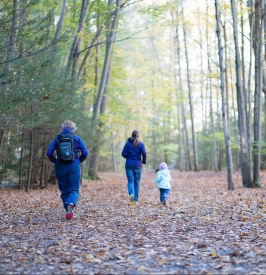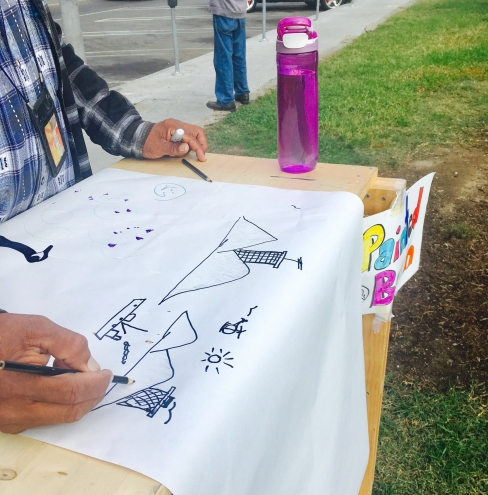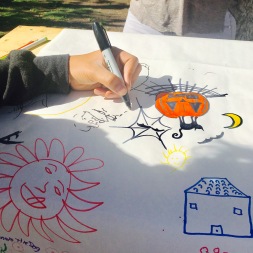
Occupational therapy is founded on the belief that participation in meaningful activities is beneficial to health and well-being. Some of the health-promoting effects associated with participation in occupation-based mental health services and in meaningful activities include improved perspective on quality of life, a sense of well-being, improved confidence and self-esteem, decreased use of crisis services and hospitalizations, and improved socioeconomic status (Gewurtz & Hirsh, 2006). While occupational therapy encompasses far more than engagement in paid employment, participation in work and related activities is recognized as contributing to the well-being and recovery of individuals labeled with serious mental illness, while the absence of engagement in meaningful work is associated with decreased signs of health and well-being for this population. The following serves to illustrate the perspective of individuals labeled with serious mental illness on the meaning of work, highlights the health benefits associated with participation in work, and enhances understanding of how occupational therapists can support the recovery process through supporting employment goals.
A meta-analysis of qualitative studies on the perspectives of individuals labeled with serious mental illness found that this population identified many benefits of being employed, including “greater autonomy, status and acceptance within society, structured use of time, a sense of purpose or focus, feeling productive and useful to others, affirmation of ability, and opportunities for social contact and personal development (Fossey & Harvey, 2010, p.308). The perspectives of individuals labeled with serious mental illness in these studies further spoke to the meaning associated with work, including creating a sense of wellness, improved relationships, and greater optimism, which were also seen as helpful in sustaining employment throughout the process of recovery.
A study by Eklund, Hansson, and Bejerholm (2001) explored relationships between health-related variables and satisfaction with daily activities in 74 adults labeled with schizophrenia. This study found a significant positive correlation between satisfaction with employment status and global well-being, and it was found that employed individuals were more satisfied with their overall daily activities. Employed individuals in this study were also rated significantly better by interviewers on global quality of life, internal locus of control, and psychosocial functioning.

Another study explored the importance of work as compared to other types of activities with 105 individuals who were separated into three groups: those who were participating in competitive work or formal schooling, those who participated in structured activities other than work or school, and those who did not participate in any structured activities (Eklund, Hansson, & Ahlqvist, 2004). Results supported previous findings that individuals who were engaged in competitive work or school displayed better psychosocial functioning and reported significantly better satisfaction with daily activities than the other two groups. Of note, there was no significant difference in satisfaction with daily activities between the group of individuals who participated in structured activities besides work and the group who did not participate in any structured activities, indicating that there is a characteristic of work that contributes to a greater sense of well-being than participation in other types of activities.
Gewurtz and Kirsh (2006) noted that “there was something about working that encouraged participants and transformed them from being a person with a mental illness to being a productive member of society” (p.6). This study explored the constructs of doing and becoming as related to participation in work for individuals labeled with serious mental illness and described participants’ experiences with work while illustrating the meaning that work brought to participants’ present lives and their futures. Through interviews, researchers found that doing work provided opportunities [for participants] to connect with others, improve their economic situations, and motivated them to manage their illness to ensure their ongoing ability to follow through with their commitments at work” (p.6). Participants also described how reflecting on their experiences of work led to self-discovery of individual skills and limitations and the ability to imagine a future for themselves as workers. On the other hand, “some of the stories recounted in the interviews suggested that the absence of doing [work] was a state filled with hopelessness in which a possible future was unimaginable” (p.10).

A study that further explored the differences in perspectives and experiences between individuals labeled with serious mental illness who were employed and those who were not found that, like the employed participants in the previous study, the employed individuals in this study talked about being actively engaged in improving and maintaining their health, which indicates that they perceived themselves as in a state of health (Woodside, Scholl, & Allison-Hedges, 2006) . Contrary to this perspective, the individuals in this study who were not employed held the perspective that their symptoms of mental illness were a barrier to obtaining work and they questioned the effectiveness of their medical treatment, indicating that these individuals perceived themselves as not in a state of health (Woodside et al., 2006). It is important to note, however, that both groups of individuals, employed and unemployed, valued feeling comfortable with people at work, which supports the findings in other studies that work provides opportunities for social participation.
From the perspectives of individuals labeled with serious mental illness, participation in work is associated with increased satisfaction with daily activities, improved sense of self, better health and well-being, and feelings of hope for the future. Participation in work is associated with better functioning and provides opportunities for meaningful social interactions, personal growth, and improved socioeconomic status, while lack of participation in work is associated with hopelessness, lower satisfaction with daily activities, and decreased overall health and well-being.
Occupational therapists can support individuals labeled with mental illness throughout the recovery process, both in helping individuals to obtain jobs and to sustain employment. The participants in the study by Gewurtz and Kirsh (2006) brought to attention the importance of having someone who “believed in them, encouraged them, or expected that they could do more” (p.8) and participants in other studies have emphasized valuing strong collaborative relationships in which a sense of optimism, interest, and encouragement in pursuit of employment goals (Fossey & Harvey, 2010). Occupational therapy’s client-centered approach in empowering individuals to do the things they want to do affords a natural fit to the purpose of supporting individuals in believing in their capacity to work.

Occupational therapists can also support individuals in navigating employment support systems, developing strategies to manage the stress of job seeking, developing self-advocacy skills, and reflecting on the characteristics of various employment settings to ensure a good fit between the individual and the job. Participation in paid work is meaningful and contributes to recovery in a variety of ways, and through bolstering efforts to obtain and maintain employment, occupational therapists can support individuals labeled with serious mental illness in realizing their full potential as positively contributing members of society.
Sharon Vincuilla, OTR/L
Occupational Therapy Doctoral Resident
References
Fossey, E. M. & Harvey, C. A. (2010). Finding and sustaining employment: A qualitative meta-synthesis of mental health consumer views. Canadian Journal of Occupational Therapy, 77, 303-314. Doi: 10.2182/cjot.2010.77.5.6
Gewurtz, R. & Kirsh, B. (2006). How consumers of mental health services come to understand their potential for work: Doing and becoming revisited. The Canadian Journal of Occupational Therapy, 73(4 suppl.): 1-13. https://doi.org/10.2182/cjot.06.014
Woodside, H., Scholl, L., & Allison-Hedges, J. (2006). Listening for recovery: The vocational success of people living with mental illness. The Canadian Journal of Occupational Therapy, 73(1): 36-43. Doi: 10.2182/cjot.05.0012.


 The clubhouse model implements several basic principles which emphasize individual strengths and potential, teamwork, the belief that work and work-mediated relationships support recovery, and empowerment through choice of activity (McKay et al., 2018, p.29). Clubhouses also provide support for gaining employment in the greater community through transitional employment,
The clubhouse model implements several basic principles which emphasize individual strengths and potential, teamwork, the belief that work and work-mediated relationships support recovery, and empowerment through choice of activity (McKay et al., 2018, p.29). Clubhouses also provide support for gaining employment in the greater community through transitional employment, 
 When seeking to creatively foster positive change in the mental health of individuals, a community-based approach may encourage participation of community members in a way that facilitates trust, alleviates discrimination, and promotes insight (Carney et al., 2012). Wakefield et al. (2007) highlight the role that community gardens play in the health and well-being of urban populations, while also emphasizing the interplay between the concepts of space, place, and occupational participation. In developing occupational therapy services in a community-based setting, literature such as this supports the development of client-centered programming that can impact the health and well-being of adults labeled with mental illness in a variety of ways.
When seeking to creatively foster positive change in the mental health of individuals, a community-based approach may encourage participation of community members in a way that facilitates trust, alleviates discrimination, and promotes insight (Carney et al., 2012). Wakefield et al. (2007) highlight the role that community gardens play in the health and well-being of urban populations, while also emphasizing the interplay between the concepts of space, place, and occupational participation. In developing occupational therapy services in a community-based setting, literature such as this supports the development of client-centered programming that can impact the health and well-being of adults labeled with mental illness in a variety of ways. Despite the large sample size in this study, the study took place in only one area of one large city, and the number of participants was not great enough to allow for generalization of results. However, the qualitative data presented here does provide insight into the positive health implications of community gardens and illustrates the worry regarding pollution and permanence of such gardens that community members face.
Despite the large sample size in this study, the study took place in only one area of one large city, and the number of participants was not great enough to allow for generalization of results. However, the qualitative data presented here does provide insight into the positive health implications of community gardens and illustrates the worry regarding pollution and permanence of such gardens that community members face. This view of the person-environment interaction also supports Persson & Erlandsson’s (2014) elaboration on the concept of ecology as the “interaction between the eco-system of the doer and the environmental ecosystem” (p.16) and the supposition that this interaction, when examined from a perspective of sustainability, has the potential to contribute to the well-being of the local environment, as well as the well-being of the greater ecosystem. The gardens did promote the well-being of the community members on a personal level, while also promoting well-being on community and environmental levels. Garden-based programming benefitted the community members on an individual level by creating an opportunity to come together to share tools, ideas, food, and culture, which contributed to decreased isolation, increased self-esteem, feelings of empowerment, and skill development (Wakefield et al., 2007).
This view of the person-environment interaction also supports Persson & Erlandsson’s (2014) elaboration on the concept of ecology as the “interaction between the eco-system of the doer and the environmental ecosystem” (p.16) and the supposition that this interaction, when examined from a perspective of sustainability, has the potential to contribute to the well-being of the local environment, as well as the well-being of the greater ecosystem. The gardens did promote the well-being of the community members on a personal level, while also promoting well-being on community and environmental levels. Garden-based programming benefitted the community members on an individual level by creating an opportunity to come together to share tools, ideas, food, and culture, which contributed to decreased isolation, increased self-esteem, feelings of empowerment, and skill development (Wakefield et al., 2007). Just as the participation of community members in the study by Wakefield et al. (2007) allowed researchers to understand what was meaningful about community gardens, the participation of community members in decisions about land development would contribute to fair allocation of resources to enable equitable distribution of rights and privileges in terms of occupational participation. However, the current state of Regent Park, with the initiation of re-development without input from those who reside in this housing complex, places the community members at risk for infringement on their freedom to participate in their valued occupation of gardening.
Just as the participation of community members in the study by Wakefield et al. (2007) allowed researchers to understand what was meaningful about community gardens, the participation of community members in decisions about land development would contribute to fair allocation of resources to enable equitable distribution of rights and privileges in terms of occupational participation. However, the current state of Regent Park, with the initiation of re-development without input from those who reside in this housing complex, places the community members at risk for infringement on their freedom to participate in their valued occupation of gardening. The study of
The study of  The status of a person’s mental health is related to how the person copes with and responds to stressful situations, and occupational therapy is an integral component in the development of coping strategies that enhance abilities to effectively manage stress. Research on resilience to stress shows that social support through quality relationships is integral to maintaining optimal physical and mental health, such that “positive social support of high quality can enhance resilience to stress, help protect against developing trauma-related psychopathology, decrease the functional consequences of trauma-induced disorders, such as post-traumatic stress disorder (PTSD), and reduce medical morbidity and mortality” (Ozbay, Johnson, Dimoulas, Morgan III, Charnay, & Southwick, 2007, p.35). For example, a study involving Vietnam veterans found that individuals with high levels of social support were 180% less likely to develop PTSD than individuals with low levels of social support, and another study discovered that patients with acute and chronic cardiac illness displayed decreased depression when they utilized active coping mechanisms, which were preceded by high levels of social support (Ozbay et al., 2007). Research on the perspectives of adults labeled with serious
The status of a person’s mental health is related to how the person copes with and responds to stressful situations, and occupational therapy is an integral component in the development of coping strategies that enhance abilities to effectively manage stress. Research on resilience to stress shows that social support through quality relationships is integral to maintaining optimal physical and mental health, such that “positive social support of high quality can enhance resilience to stress, help protect against developing trauma-related psychopathology, decrease the functional consequences of trauma-induced disorders, such as post-traumatic stress disorder (PTSD), and reduce medical morbidity and mortality” (Ozbay, Johnson, Dimoulas, Morgan III, Charnay, & Southwick, 2007, p.35). For example, a study involving Vietnam veterans found that individuals with high levels of social support were 180% less likely to develop PTSD than individuals with low levels of social support, and another study discovered that patients with acute and chronic cardiac illness displayed decreased depression when they utilized active coping mechanisms, which were preceded by high levels of social support (Ozbay et al., 2007). Research on the perspectives of adults labeled with serious  On a neurophysiological level, the neurotransmitter oxytocin has been investigated as a component in the regulation of social attachment and promotion of positive social interactions, and findings conclude that oxytocin is associated with reductions in anxiety and reduced secretion of stress-related hormones (Ozbay et al., 2007). Therefore, increased levels of oxytocin may contribute to increased positive social interactions and subsequently increased development of quality social support systems.
On a neurophysiological level, the neurotransmitter oxytocin has been investigated as a component in the regulation of social attachment and promotion of positive social interactions, and findings conclude that oxytocin is associated with reductions in anxiety and reduced secretion of stress-related hormones (Ozbay et al., 2007). Therefore, increased levels of oxytocin may contribute to increased positive social interactions and subsequently increased development of quality social support systems. Studies on the benefits of human-canine interaction have found that the presence of a service dog was associated with increased friendly social attention, smiles, and conversation from others for persons who use wheelchairs (Beetz et al., 2012), dogs provided a safe topic of conversation among dog owners who frequented a local park in the UK (Robins, Sanders, & Cahill, 1991), and in a study in Western Australia, 83.3% of owners who walked their dogs reported talking with other pet owners during those walks (Wood, Giles-Corti, & Bulsara, 2005). This presents an opportunity for occupational therapy interventions for adults labeled with mental illness, specifically when goals include boosting resilience to stress through the development of increased social participation and establishment of social support networks. However, this area of intervention has only been minimally studied and rarely implemented.
Studies on the benefits of human-canine interaction have found that the presence of a service dog was associated with increased friendly social attention, smiles, and conversation from others for persons who use wheelchairs (Beetz et al., 2012), dogs provided a safe topic of conversation among dog owners who frequented a local park in the UK (Robins, Sanders, & Cahill, 1991), and in a study in Western Australia, 83.3% of owners who walked their dogs reported talking with other pet owners during those walks (Wood, Giles-Corti, & Bulsara, 2005). This presents an opportunity for occupational therapy interventions for adults labeled with mental illness, specifically when goals include boosting resilience to stress through the development of increased social participation and establishment of social support networks. However, this area of intervention has only been minimally studied and rarely implemented.










 A more important realization, however, is that this disengagement and marginalization does not only negatively affect the population of adults who are labeled with mental illness, but universally concerns the health of all of us, because social exclusion is “created by structural determinants and large scale organizational practices, not individual circumstances” (Townsend, 2012, p.14). Therefore, social and occupational justice will advance when we as a civil society “organize universal rights to affiliations that include humans, other species, and control over one’s environment…without occupational marginalization or occupational deprivation” (Townsend, 2012, p.15).
A more important realization, however, is that this disengagement and marginalization does not only negatively affect the population of adults who are labeled with mental illness, but universally concerns the health of all of us, because social exclusion is “created by structural determinants and large scale organizational practices, not individual circumstances” (Townsend, 2012, p.14). Therefore, social and occupational justice will advance when we as a civil society “organize universal rights to affiliations that include humans, other species, and control over one’s environment…without occupational marginalization or occupational deprivation” (Townsend, 2012, p.15).